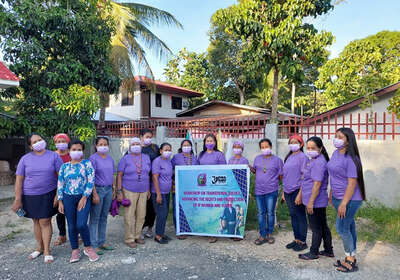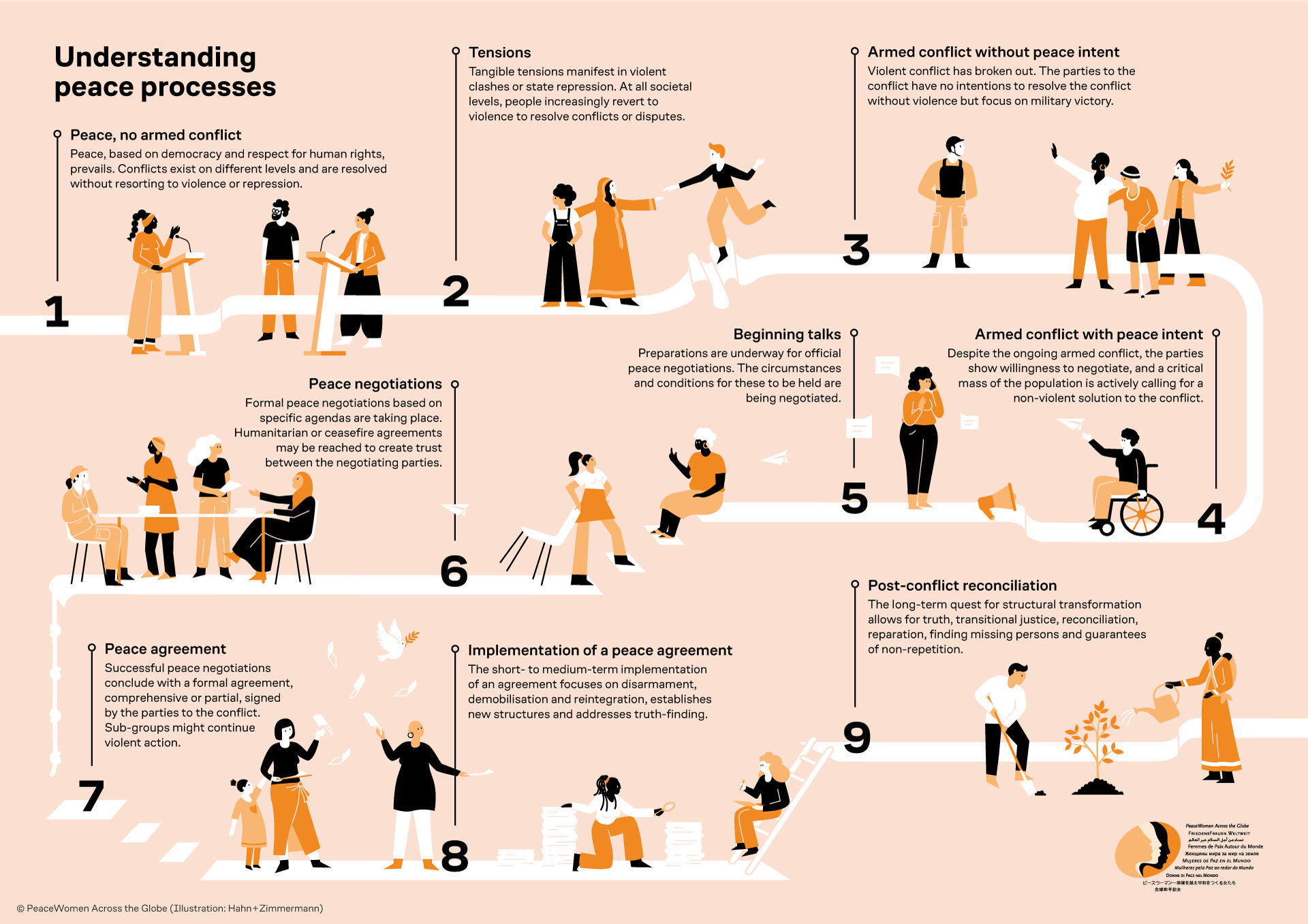Publication: From Transition to Transformation
Making peace processes more gender-sensitive

What images do the words "peace processes" evoke in your mind? Do you imagine years of negotiations culminating in a ceremony where the parties to the conflict sign an agreement, followed by a photo of the handshake that goes around the world? We have scrutinised and deconstructed this common image and taken an in-depth look at peace processes, as well as the question: "How do women influence peace processes?" The result of this work is a graphic representation of the different stages of peace processes. With this tool, we want to focus on the role women play and where they exert influence to drive peace processes and prevent setbacks.

Peace processes are never linear but take place in stages or phases that often overlap, without a clear timetable. A peace process is more of a puzzle made up of several successive small steps than a large, meticulously planned attempt to end a conflict based on a manual. At any stage it can go off track – even after a peace agreement has been signed – and suffer setbacks. Our work is based on a comprehensive understanding of peace. We define peace processes as all peacebuilding initiatives, formal and informal, that strive for transformative, structural change by tackling the root causes of conflict and violence before, during and after armed conflict.
This graphic illustration shows this complexity without claiming to present a universally applicable model. Rather, it is intended to raise questions, facilitate analytical debate and encourage the addition of feminist visions to conventional narratives.
The influence of women and their roles in a peace process – they take centre stage in the illustration – are just as diverse as the women themselves. They are not only negotiators, mediators, signatories and facilitators in peace negotiations. From our many years of experience and from working with our partners and peace activists in different contexts, we know that women play diverse roles in all nine stages of the process:
In peace time or in contexts where tensions exist (stages 1-2) – using Brazil and Indonesia as examples – they influence political debate and agendas, recognise potential for conflict and actively prevent the emergence of tensions and clashes or outbreaks of violence.
During an armed conflict (stages 3-4) – using Ukraine as an example – they advocate non-violent conflict transformation and call for peace negotiations and the renunciation of enemy stereotypes. They run contact centres for victims, create trust between the parties to the conflict and promote peace intentions that are acceptable to the majority.
During formal negotiations (stages 5-7) – using the example of Colombia – they demand the inclusion of diverse visions and the participation of women in the talks and formulate gender-equitable provisions.
After the end of a conflict (stages 8-9) – using Nepal and the Philippines as examples – they play a key role in monitoring implementation, winning majorities in favour of peace and taking an active role in truth-finding processes. They lead initiatives for reconciliation and initiate structural change by calling for a critical examination of taboo subjects and non-repetition.
In all phases and in different contexts, we accompany women's diverse peace work, taking into account the specific needs and risks. We are convinced that if we walk the paths to peace together with partners and affected women, the paths may not be easier, but will perhaps be shorter.